Software-Defined Radio Odds and Ends
Al Klase - NJARC Technical Coordinator - 13 July 2019
SDR is the way
radio is done these days because it leverages semiconductor technology
to achieve high performance for very little money.
This page is a
followup to Alan Wolke's excellent SDR presentation at the New Jersey
Antique Radio Club meeting on 12 July 2019. Alan's presentation
is here.
To come up to
speed quickly, here are some new signs from the Radio Technology
Museum. I'd been struggling with ways to explain away the last
half century of radio technology. I'm settling on this:
You can try this at home.
The Digital Video Broadcast (DBV) standard is used in large
areas of the world, but not North America. The RTL "dongles" were
developed to allow one to use his PC or mobile device as a DVB
television set. With the proper software these dongles can be
used as general purpose radio receivers.
While basic RTL devices are available on E-bay for less than 10 bucks,
Alan and I recommend the RTL-SDR Versio 3. This will tune down to
the AM broadcast band, while the basic dongles only work from 24 MHz
upward, plus it has a friendly SMA connector. Here's their product page.
Go ahead and buy the $30 kit on Amazon. It includes a
VHF/UHF antenna with tripod and suction-cup mounts and a cable.
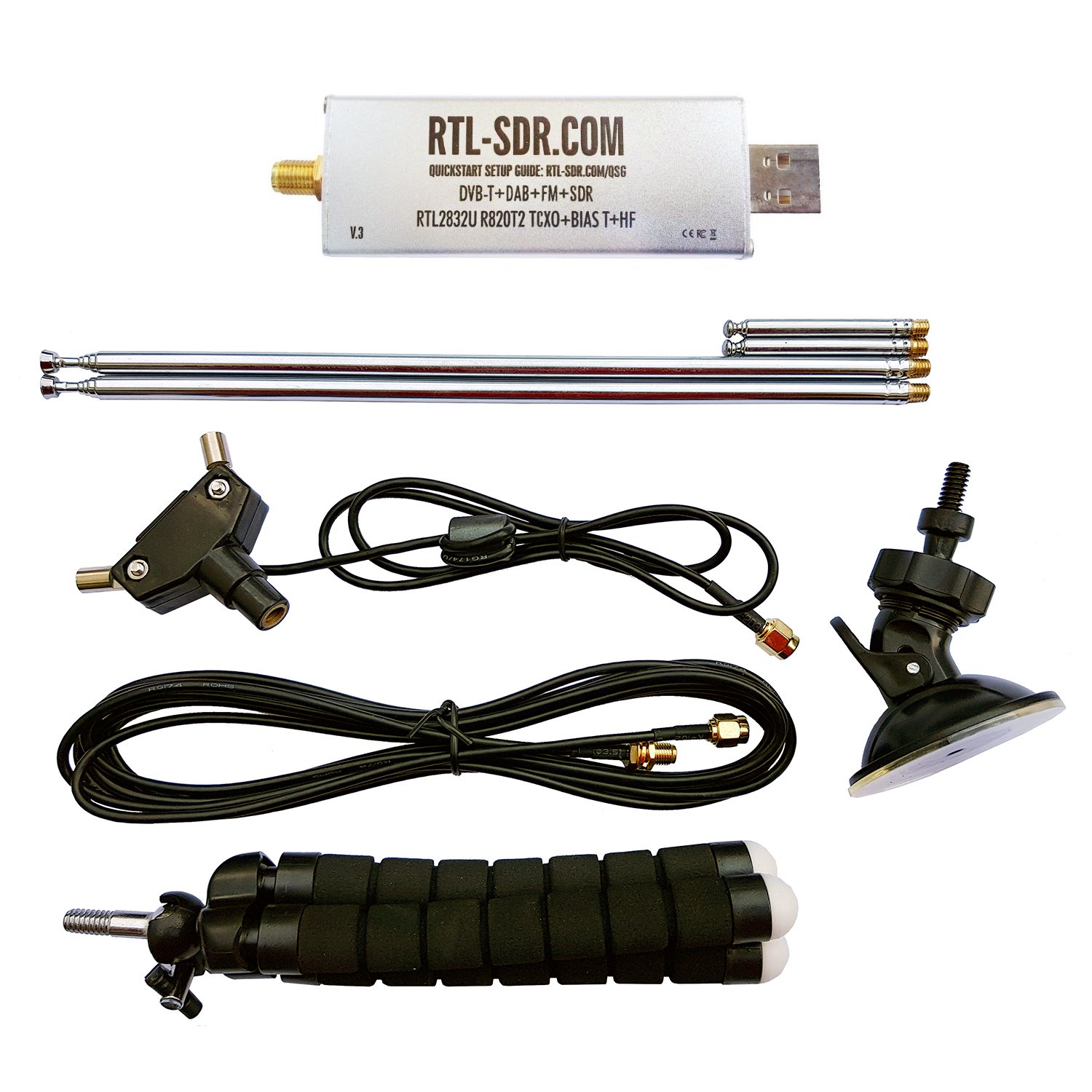
You'll need softwar, but it's free.
RTL-SDR Quick-Start
The first software you'll encounter is SDR-Sharp, the program Alan demonstrated.
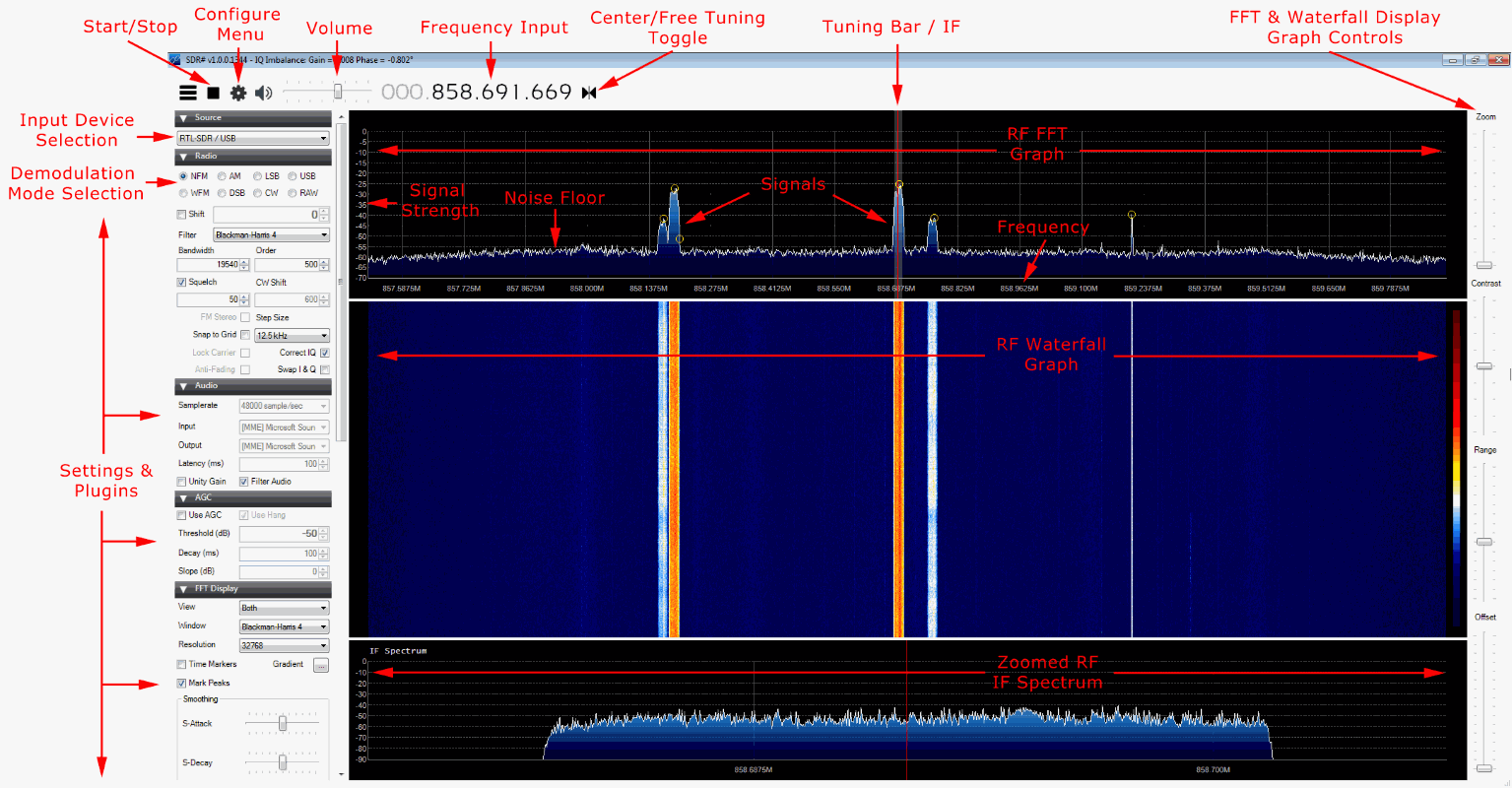
I'm a fan of HDSDR, scroll down a little further on the Quick-Start page.
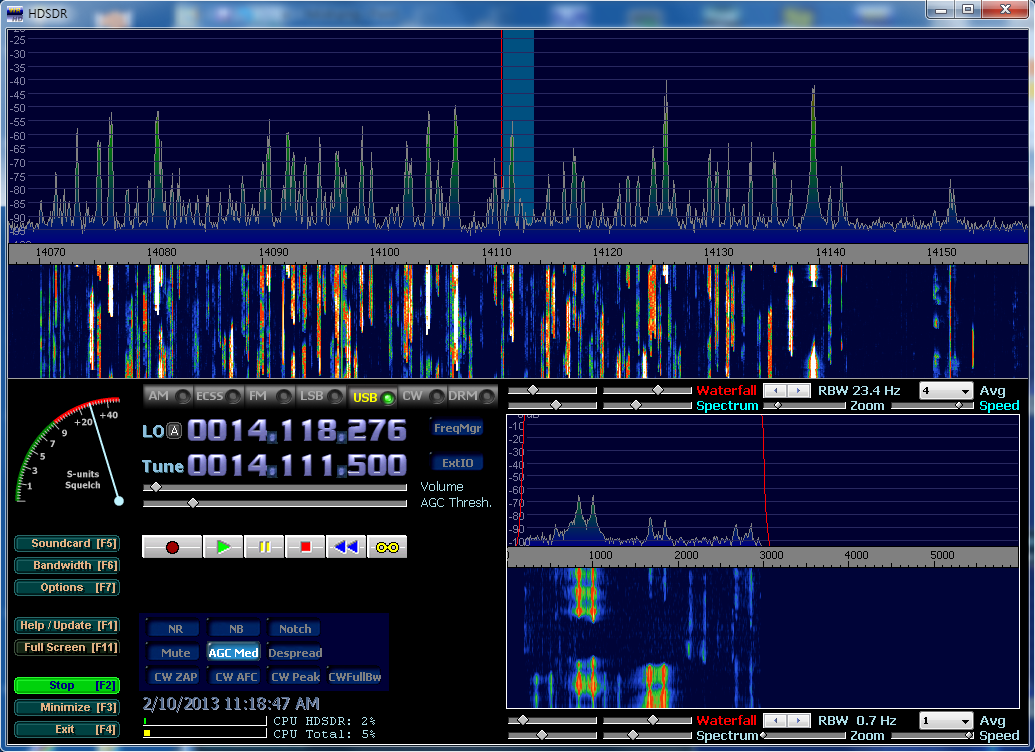
One of the interesting features of HDSDR is that you can connect to the
IF output of your half-way-modern ham transciever to get a spectrum
display, and control the rig right out of the HDSDR screen using the
Omni-Rig protocol that's built in. Click on a signal. and give
him a call!
Antenna
We were able to demonstrate this radio in a pretty RF-unfriendly place
by setting up an active antenna outside the building, and bringing a
clean signal inside via coax cable.
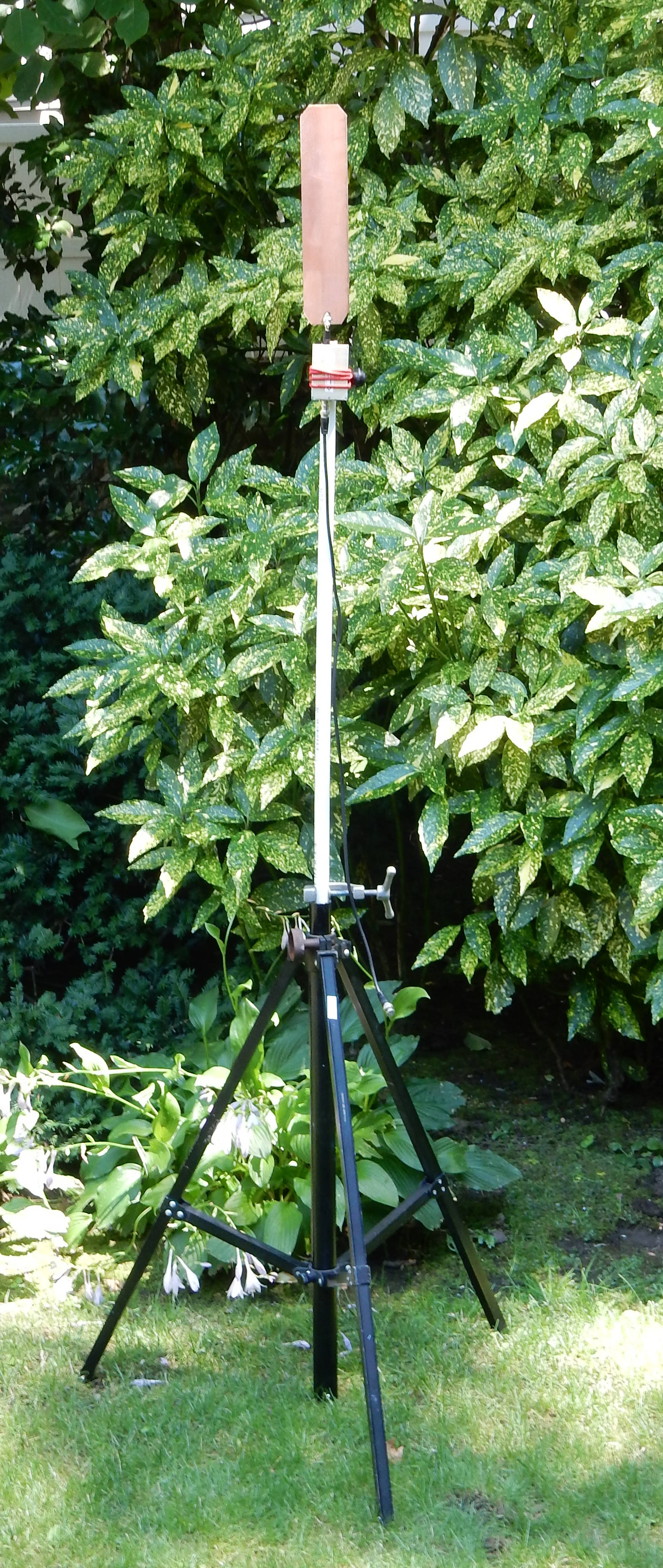
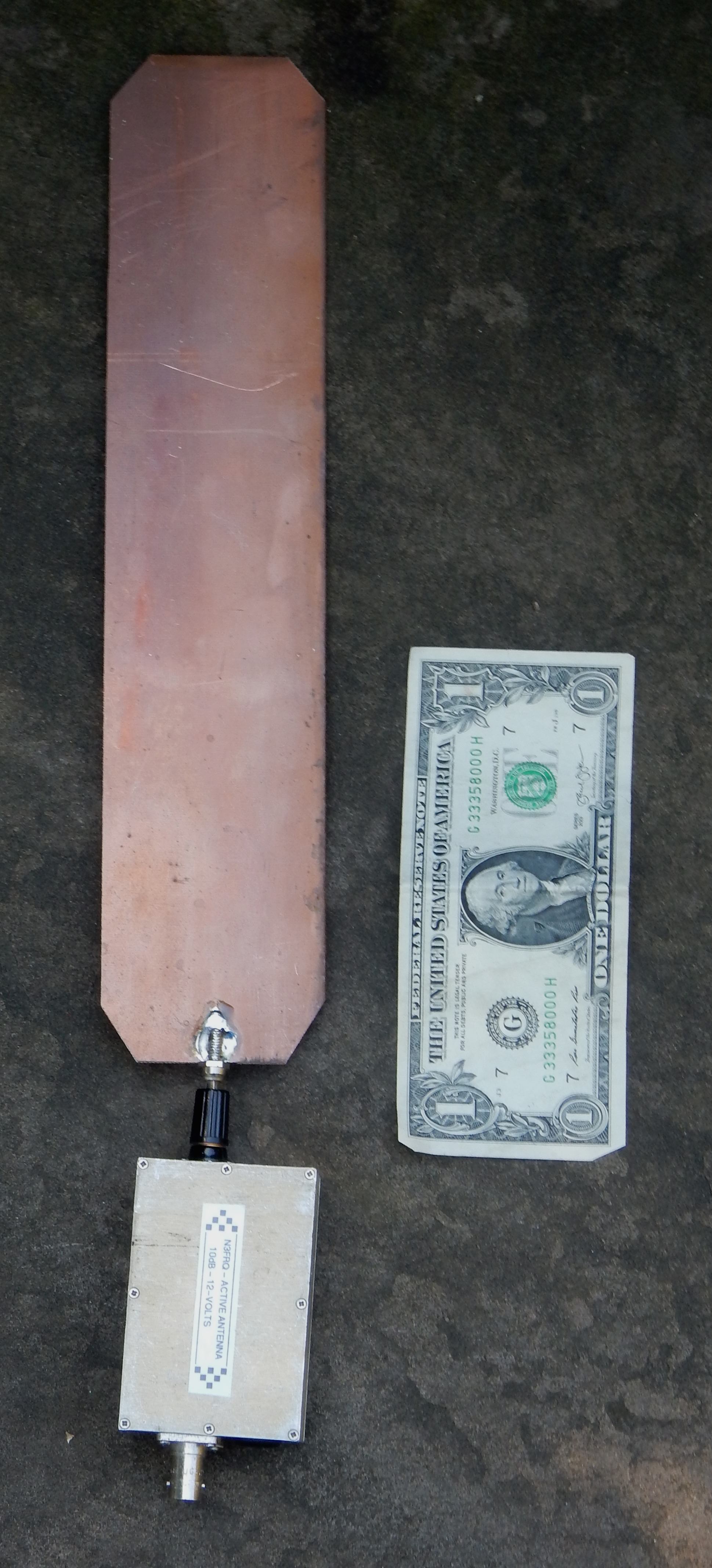
This is one of my homebrew active antennas wired in the high-gain configuration. You may want to review my Practical Antennas presentation from last year. Scroll down to "Probe Antennas" on page 24.
If you don't want to build an active antenna from scratch, here's a good alternative.


Active
Antenna
Power Feed
I've been playing with one of these, and it's a lot of bang for the
buck. Of course, you'll have to round up cables and connectors,
and maybe put the antenna in a piec of PVC pipe for weather
protection.




